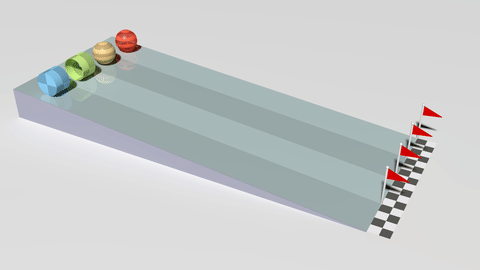btm said:
sibeen said:
A tautochrone curve is another name for an isochrone curve. I didn’t kow that until today.
The brachistochrone problem was first posed by one of the Bernoulli brothers (Jakob, IIRC, but I may be wrong); it led directly to the development of the calculus of variations. The solution of the problem turns out to also be the solution to the tautochrone problem. The names mean “shortest time” (brachistochrone) and “same time” (tautochrone). “Isochrone” is a recent appelation, but, as noted, means the same tautochrone.
The brachistochrone problem:
Consider a frictionless wire connecting two points on a vertical plane, and a bead moving on that wire under the influence of gravity. Find the equation of the curve the wire must trace to minimise the time it takes the bead to move from the top of the wire to the bottom.It turns out that the solution curve set doesn’t include a time parameter. The solution curve is a cycloid.
sibeen said:
mollwollfumble said:I had a similar problem to this recently, but it wasn’t the same and I never figured out how to solve it.
Worth a thread?
https://www.youtube.com/watch?v=eBc827pwKf0
ROFL
A tobacco tin was used on a kids show. That’d get you crucified now days. :)
BTW, I use the term ‘tobacco’ loosely. Dr Pat shudders
sibeen said:
btm said:Do you know the calculus of variations? If so, did you try that on it? Are you familiar with the Euler-Legrange equation? (I assume so on all three counts, but they were not part of my BEng, even with the extra maths and physics I did.)
Mate, I have trouble remembering even the basics of calculus, let alone some esoteric variations :)
Have done calculus of variations. A bit of a black art to me, but I did try it.

